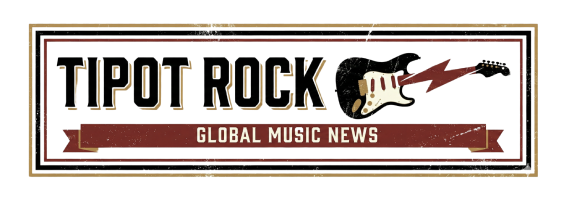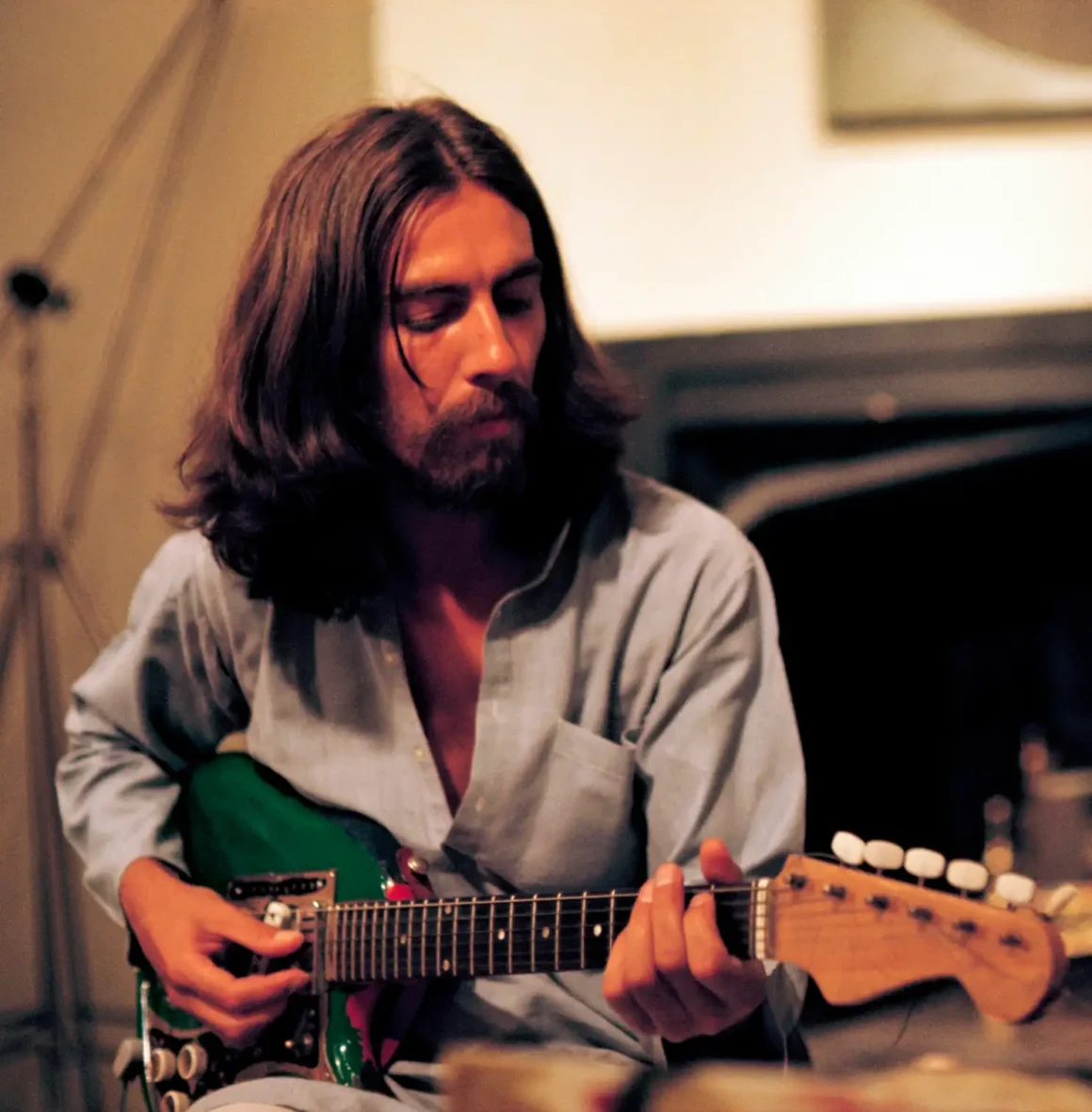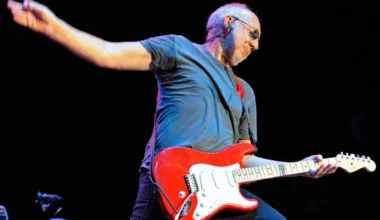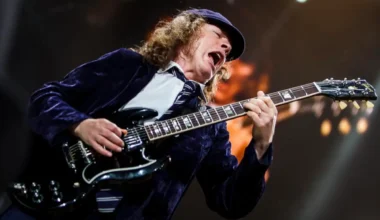George Harrison’s guitar playing was always about serving the song above all else.
While it’s tempting for any guitarist to unleash wild solos, the true artistry lies in crafting something that enhances the music, subtly reshaping familiar patterns to create something fresh.
Harrison mastered this balance both with The Beatles and in his solo work, and he believed the foundation of great solos had been established well before Beatlemania took off.
Harrison drew from a wide range of early guitar icons. Chuck Berry’s groundbreaking work on “Johnny B. Goode” set the bar for lead guitar playing, while Scotty Moore, Elvis Presley’s go-to guitarist, added tasteful licks to rock ‘n’ roll classics.
But perhaps Harrison’s most profound influence came from Carl Perkins.
Known for writing “Blue Suede Shoes,” Perkins’ country-infused style resonated with Harrison, who would later incorporate that signature twang into songs like “All My Loving” and “What Goes On.”
Another key figure in Harrison’s development was Buddy Holly, who inspired The Beatles to break away from standard rock and roll formulas.
Holly was less concerned with convention and more with whatever caught his ear.
His inventive use of chords, like the surprising shift to F major in “Peggy Sue,” pushed boundaries and gave musicians like Harrison the freedom to experiment.
Harrison admired Holly’s approach, particularly his unorthodox solos, which prioritized melody and simplicity over technical flash.
Reflecting on Holly’s playing in a 1987 Guitar Player interview, Harrison said, “Yeah, that’s great stuff, isn’t it? That’s still one of the greatest guitar solos of all time.”
Instead of going for complexity, Holly’s minimalism left a lasting impact on Harrison’s style.
Even as Harrison ventured into Indian music and expanded his sonic palette, he maintained that same ethos of restraint.
He could shred with the best but often chose not to, favoring lead lines that were simple yet emotionally resonant. This approach carried through his work with The Beatles and beyond.
For Harrison, it was never about showing off. He wanted to craft something meaningful, understanding, as Buddy Holly had taught him, that a few well-placed notes could speak just as loudly as a technical barrage.







